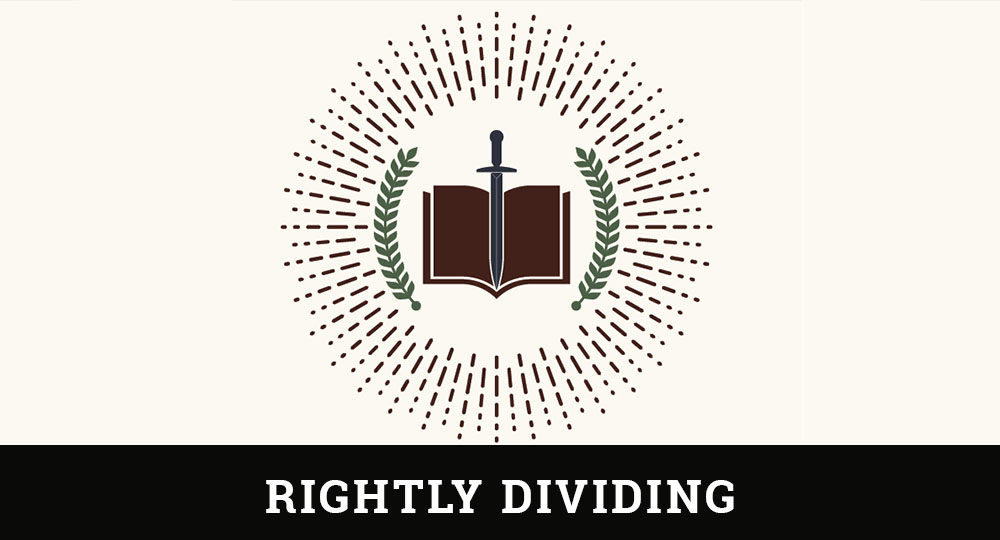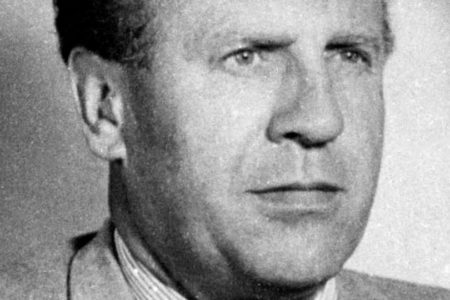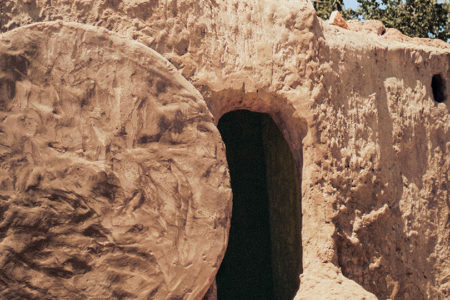The Thessalonian Church
Acts 17:1–10
One of the apostle Paul’s most important ministries took place in Thessalonica. His letters to believers there show how he established churches early in his ministry, met with opposition, instructed new believers in doctrine, mentored Christians, and presented major themes on end-times prophecy.
So, as we appear to be in the last days, it is especially important to study Paul’s epistles to the Thessalonians, including how and when the church was planted.
Thessalonica was established around 315 BC by Cassander, who named it after his wife Thessalonica, the half-sister of Alexander the Great. The Romans took the city in 168 BC and made it the capital of Macedonia in Greece.
Thessalonica was a “free city” (without a military force) governed by its citizens and was more Greek than Roman in character. Its population, estimated at 200,000, was made up of Greeks, Romans, and Jews.
The city borders the Aegean Sea, providing access to the Mediterranean. Its location made it a major shipping center, second only to Corinth and Ephesus. Artisans, merchants, and trade guilds made it wealthy, although most citizens performed physical labor of all types.
Religious pluralism filled Thessalonica with all types of pagan cults, temples, and deities. Archaeological evidence indicates at least 25 gods were represented in heathen worship, including Zeus, Athena, Apollo, Artemis, Aphrodite, Dionysus, and the Roman emperor, to name a few. However, some Gentiles had become proselytes to Judaism and were known as God-fearers.
Paul Preaches in Thessalonica
Paul’s ministry in Macedonia was not of his own choosing. He wanted to evangelize the Roman province of Asia (Turkey), but God hindered him until his third missionary journey. He had planned to minister in Bithynia (northeast of Mysia), but the Holy Spirit stopped him (Acts 16:6). So he passed by Mysia and went to Troas, where he received a night vision of a man from Macedonia pleading, “Come over…and help us” (v. 9).
From Troas Paul went to Philippi in Macedonia, where he and his traveling companion, Silas, were beaten, imprisoned, and released by the city’s magistrate (vv. 20–38). In Philippi the jailer and his family came to faith in Christ (vv. 31–34) and encouraged Paul and Silas to leave the city, which they did. They then traveled to Thessalonica (17:1), which proved to be where the Lord wanted them to evangelize. They started the church there between AD 50 and 51 (vv. 1–10).
The apostle’s strategy was to preach the gospel first in a city’s synagogue, always going to “the Jew first” (Rom. 1:16; cf. Acts 14:1, 27; 15:3, 19; 16:13–14; 17:1–2, 10–12, 17; 18:4, 7, 19; 19:8, 10; 20:21; 26:20; 28:17, 23–24). So on arriving in Thessalonica, he went to the “synagogue of the Jews” (17:1): “Then Paul, as his custom was, went in to them, and for three Sabbaths reasoned with them from the Scriptures” (v. 2).
Notice, he did not preach at them but, rather, “reasoned with them from the Scriptures.” He used the Messianic texts in the Old Testament. The Hebrew Scriptures prove the Messiah needed “to suffer and rise again from the dead” (v. 3). Paul explained that Jesus fulfilled these texts: “This Jesus whom I preach to you is the Christ [Messiah]” (v. 3).
Paul Persuades the Thessalonians
Both Gentiles and Jews heard the apostle’s message. “Some of them were persuaded; and a great multitude of the devout Greeks, and not a few of the leading women, joined Paul and Silas” (v. 4). Although the synagogue probably drew Jewish people primarily, the text emphasizes that three groups heard Paul’s message:
(1) The phrase some of them were persuaded refers to Jewish people who believed, such as Jason (Greek form of the Jewish name Joshua, v. 5).
(2) The phrase a great multitude of the devout Greeks refers to the God-fearing Gentiles who had left the false gods of paganism and embraced the one true God of Judaism. They were former polytheists who accepted the ethical monotheism of Israel and attended the synagogue, but they did not keep the whole Mosaic Law (such as circumcision).
These people actually experienced a double conversion: from paganism to Judaism and from Judaism to Christianity. They were seekers of truth, and Paul’s message convicted them of their sin and convinced them Jesus was the Messiah.
(3) The “leading women” (v. 4) were the prominent wives of important Thessalonian leaders.
The church would be composed primarily of Gentiles who came out of a pagan culture. Christianity appealed to all of society.
Yet these conversions were not instantaneous. Paul reasoned with the Thessalonians in the synagogue “for three Sabbaths” (v. 2). Some commentators believe he ministered in Thessalonica much longer, which is possible because the Philippian church had time to send two financial gifts on separate occasions to Paul in Thessalonica (Phil. 4:16).
Paul Evades Persecution
Paul’s preaching and especially disliked seeing Gentiles believe Jesus was the Messiah. Filled with resentment and bitterness, their leaders plotted to destroy Paul and those with him: “The Jews who were not persuaded, becoming envious, took some of the evil men from the marketplace, and gathering a mob, set all the city in an uproar and attacked the house of Jason, and sought to bring them [Paul and Silas] out to the people” (Acts 17:5).
They recruited rabble—ungodly men who were probably unethical, unskilled, and unemployed criminals. The mob attacked Jason’s house hoping to seize Paul and Silas and bring them before the politarchs, or elected governors, of the city, resulting in their trial and destruction. “But when they did not find them, they dragged Jason and some brethren to the rulers of the city” (v. 6). Jason probably opened his home to Paul and Silas. He had become a believer under the apostle’s ministry. Not finding Paul and Silas, the mob hauled Jason and other Christians before the rulers and magistrates.
The mob’s accusation was twofold: “These who have turned the world upside down have come here too. Jason has harbored [welcomed] them, and these are all acting contrary to the decrees of Caesar, saying there is another king—Jesus” (vv. 6–7).
Jason and the others were charged with treason. They were charged with causing a revolution, breaking the Pax Romana (Roman Peace), and trying to overthrow the Roman government to set up a king in place of Caesar. There was an element of truth to the accusations. Jesus is a King, and He will one day judge and rule the earth. But the accusers misinterpreted the circumstances and timing of Christ’s rule. In no way were the Christians inciting disloyalty to Caesar or attempting to establish Christ’s Kingdom rule in place of Roman rule.
The mob’s charges alarmed the citizens and politarchs of Thessalonica: “They troubled the crowd and the rulers of the city when they heard these things” (v. 8). Disturbing the peace was a serious charge that could bring Roman sanctions on the city and its rulers. However, the Thessalonian leaders did not panic, unleash violence on the Christians, or imprison them. They acted reasonably and prudently. They heard all the charges and then pronounced their verdict based on these factors:
- Paul and Silas were missing and thus could not be judged.
- No evidence showed that Jason or other Christians were propagating Paul’s teaching.
- The leaders received scanty proof of wrongdoing and probably saw through the plot after weighing the evidence. They surmised the accusers were motivated by jealousy, rather than loyalty to Rome and Caesar.
Judicial action was taken against Jason and the others: “So when they had taken security from Jason and the rest, they let them go” (v. 9). The word security means the Christians posted a financial bond. This was not a payoff but, rather, an assurance that if they caused another disturbance, they would lose all they owned and be imprisoned; and the church would be disbanded.
The church made an agreement with Paul and Silas that the two men would leave the city: “Then the brethren immediately sent Paul and Silas away by night to Berea” (v. 10). Under the shroud of darkness, Paul and Silas left that night for Berea, approximately 40 miles southwest of Thessalonica.
Plight of the Thessalonians
Upon Paul’s departure, this extremely young church was devoid of mature leadership to provide counsel and discipleship; and it would continue to suffer persecution (1 Th. 2:14–16).
Paul knew severe suffering would be this church’s lot, and he warned about it. The apostle was continually concerned for the well-being of the brethren in Thessalonica and repeatedly prayed and agonized over their situation. He sent Timothy to comfort the Thessalonian Christians and report back on their spiritual condition. Timothy returned with an encouraging report of the church’s faith and love (3:4–7). Greatly relieved, Paul dictated his first epistle to the Thessalonian church.
Rejoicing over the Thessalonians’ faith and service for the Lord, Paul filled his letter with love and instruction on how to live in these last days as believers, anticipating the Lord’s return.









Awesome article!!!
Thank you very much!
Quick question. Did the Church start out as a house Church?
As I prepare for an upcoming Small Group meeting, your synopsis was extremely helpful and provided improved context and insight. I especially liked the section that put a crack in the certainty that Paul was with the Thessalonians for just three weeks. I’m not convinced yet, but always will be open to that possibility. However, the subject of “three weeks” perhaps is a distracting topic that only serves to cloud the real purpose of the message.
Thank you for this well written and informative article on the Thessalonian church… I am being led to begin a single women’s ministry and was led by the Holy Ghost to study 1 Thessalonians with my ladies… this article has not only been informative but wonderfully set up to flow with the scriptures and in so helping me to format my study.. May the Lord bless you and keep you 🙏
I have seen the estimated population of Thessolonica at 200,000 and more recently by researcher, Stark, based on more recent archeological evidence as 35,000. I can understand even such large variations.
What I have not seen and am interested in is an estimation of the size of the Christian community that Paul writes to. Any help on that question would be appreciated.
may God bless you, it is very nice to me on preparing Sunday ceremony.
It is good information about Thessalonians
Fantastic Information – well laid out. Thank you!
This is a very informative and helpful historical account of Paul and the establishment of the church at Thessalonica. Teaching strategies used to address the gospel of Christ to the Greeks, Romans and the Jews alike truly reflect and fulfill the desire of the Holy Spirit to establish the church in Thessalonica for the gospel of Christ to be taught and to encourage Christians to stand firm on their faith and to endure sufferings until Christ returns to punish the persecutors and the sinners, but save the righteous. Thank you for your work. You are blessed
looking for resources re: the continuing church at Thessalonica. Early church pastors etc. Help please. Thank you.
Beautiful presentation of Paul’s account!
Shalom Shalom,
JZ
This is awesome. It helped my study.
Some rather stern responses regarding another writing about Christ’s presence and miracles in this day. We might do well to put into context the situation. Indeed, we know Christ is not on the earth today, so Mr. Levy would certainly be right on that point. If He were, we would have the second coming, and He would have taken us up with Him. Do miracles happen every day? What we think of as miracles, yes. But are they coming through a physical being as was provided in the days of Christ on the earth, and His appointing such powers through the Holy Spirit to the Apostles? That is a stretch on the scriptures I suggest we do not choose to add. Rather, the blessings that we perceive as miracles are a gift from the Trinity as seen fit from above. Let us remember, attacking a brother as “sacreligious ” is quite harsh and out of what our character should represent. Let us be thankful we have the privilege of reflecting on His word and the author of this article’s word, and growing in our understanding. Respectfully submitted.
This was a good resource for a presentation I’m giving to a group of teenage boys. I’m going to have them compare the church at Thessalonika to our church to see how we measure up.
God Bless you!
Preparing to teach a Sunday school lesson in relation to this article. It was very helpful to me. Thank you for such a wonder resource.
This article is a blessed resource as I am preparing a sermon on Paul’s work in the Thessalonian church. It is clear and well written. Thank you.
I also recently read another article of yours where you stated that Jesus is not on earth performing miracles now. You might want to re-think that. He is performing miracles including our salvation through the Holy Spirit.
Peace & God’s abundant blessings.
I cannot see how anyone can say Jesus is not performing miracles on the earth today! That is sacreligious!! Every single day we see and experience His miracles and His work with us in our lives every day. Jesus is truly a God of miracles! Shame on those who dispute that! No wonder the state of our Christianity is where it us today and people are so broken and confused!
Very well done, thank you. Jesus is not on earth at this time but He is returning soon. Miracles are happening all the time; God doesn’t have to be ‘on’ the Earth, He is omniciant and omnipresent, He and He alone is ‘Almighy’ God, nothing hinders, impedes or limits the Lord. He is faithful and unlimited. He is the one and only wonder working, miracle working God. His blessed Holy Spirit is with us, for us and in us. Praise the Lord and thank you Jesus. To God be all the glory.
In His grip,
Jeff